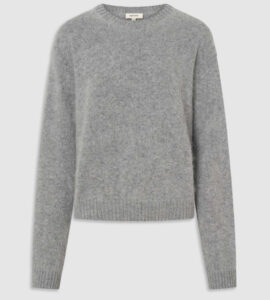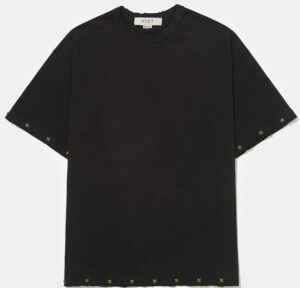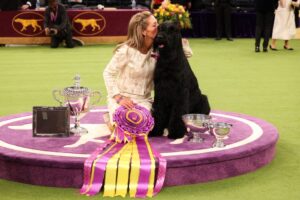

In a quiet room lit by soft morning sun and the gentle clatter of a spoon against ceramic, a sweater is pulled on—not with fanfare, but with intent. It’s a familiar ritual. One that starts a day. One that sets a tone. The sweater is Oroton’s Cashmere Blend Knit—not just a garment, but a feeling. This isn’t merely fashion; it’s habitual elegance, wrapped in the softness of cashmere and the resilience of merino wool. It is as much about presence as it is about practicality.
Once known primarily for its gleaming metallic mesh bags swinging from the arms of elegant women in Sydney, Oroton has become something of a quiet giant in modern Australian luxury. It no longer shouts, nor needs to. The Oroton woman—or man—has changed too. They’ve traded red carpets for real moments. Flash for form. And in those transitions, pieces like this knit become cultural markers of a new kind of wealth. The kind that’s not seen but felt.
A Thread Through Time: Oroton’s Origins
Oroton’s journey begins in 1938, in Sydney, Australia, as a modest importer of luxury fabrics. By the 1950s, it had transformed into a household name, largely thanks to its signature mesh handbags—a daring move that combined femininity with industrial innovation. But it wasn’t until the brand started evolving into apparel in the 2000s that its true modern identity began to emerge. Clothing was not just a new category—it was a new philosophy.
Today, Oroton is defined by pared-back sophistication, echoing the Australian landscape—its dusty neutrals, coastal blues, and eucalyptus greens. The Cashmere Blend Knit belongs to this chapter of Oroton’s story. It doesn’t dazzle on a runway; it waits quietly on a well-made chair, or folded neatly into a carry-on. It lives.
The Fabric of a Feeling
There’s something inherently poetic about fabric that remembers your body. Oroton’s knit is made from a blend of premium Australian merino wool and fine cashmere—a marriage that fuses softness with structure. Merino, known for its breathable and temperature-regulating properties, forms the sturdy backbone of the piece. Cashmere, the rarest and most luxurious of natural fibers, lends it warmth and softness without weight.
It’s likely the blend leans around 70% merino and 30% cashmere—enough to ensure plush texture without rendering the piece fragile or overly precious. The yarn feels substantial but breathable, allowing for year-round wear. It’s the type of knit that becomes second skin, molding to its wearer without ever stretching out or slouching down.
The Silhouette: Boxy but Intentional
The cut is where Oroton’s design philosophy whispers loudest. This knit is not slim, not sculpted, not made for the boardroom or the bar—it’s made for you. The boxy crewneck silhouette is slightly cropped, with relaxed shoulders and a modest drop at the sleeve. It skims rather than clings, offering an ease that is unmistakably modern.
The neck is classic—crew, clean, familiar—inviting layering without crowding jewelry or makeup. The sleeves are generous without being bulky, and the ribbed cuffs hold just enough shape to create structure. Every proportion feels thought through but not over-designed. It is not trying too hard. That’s the point.
A Knit for All Seasons (and All Selves)
Some sweaters belong only to winter. Others flirt with spring, or collapse under the weight of autumn. This one doesn’t discriminate. Oroton’s Cashmere Blend Knit is built for transitions, both seasonal and personal.
- In winter, it’s the perfect mid-layer beneath a wool coat, adding insulation without bulk.
- In spring, it replaces outerwear entirely, working over dresses or linen trousers.
- Come summer, it becomes a beach staple—draped over shoulders when the sun dips.
- And in fall, it tucks neatly into skirts, its color echoing the landscape.
Its colorways—soft oatmeal, cloud grey, deep navy—aren’t just neutral. They’re adaptive, catching light and mood in equal measure.
The Oroton Way: Subtlety as Status
In a world where logos scream and status is often mistaken for sparkle, Oroton’s knit whispers. There are no monograms, no hardware, no ornate detailing. The luxury is in the fabric, the fit, the finish. It’s the kind of piece that gets better the less it tries to impress. And that’s precisely why it does.
Wearing it, you’ll start to notice things. How strangers ask where it’s from, not because it looks expensive, but because it looks… right. How it slips into wardrobes of every kind—whether your aesthetic is Parisian minimalism or Brooklyn streetwear.
This is what quiet luxury looks like: not less, but less obvious.
How It Stands Apart
To understand Oroton’s offering, it’s worth comparing it to the likes of other high-end brands that dabble in knits: Everlane, The Row, COS, Nili Lotan, even Brunello Cucinelli. What Oroton provides is a middle path. It doesn’t demand the price tag of Italian couture, nor does it fall into the fast fashion cycle.
Compared to Everlane, the fabric quality is leagues ahead. Compared to Cucinelli, the price is human. Against COS, the silhouette feels more intimate, more lived-in. And against The Row, there’s an edge of warmth—emotional, not just physical.
It’s knitwear for the person who could afford more but doesn’t need to show it.
Care: A Ritual, Not a Chore
Luxury clothing often comes with complicated laundry tags. Not this one. Oroton recommends a gentle hand wash or a dry clean—though loyalists suggest laying flat to dry after a rinse in baby shampoo works wonders.
This is a garment that will last, provided you treat it with the respect it deserves. Store it folded, not hung. Air it out. Let it rest. Rotate wear. It will reward you with years—maybe even decades—of soft, pill-free wear.
Sustainability: Beyond Surface
In an age of eco-marketing and greenwashing, Oroton doesn’t overstate its sustainability credentials—but they’re there. The merino wool is ethically sourced from Australian farms, which prioritize both animal welfare and environmental stewardship. The brand has made moves to reduce production waste, and while it doesn’t yet hold carbon-neutral certification, its manufacturing footprint is thoughtfully considered.
More importantly, Oroton’s sustainability lies in its design ethos. Pieces like this are meant to be worn over time, not disposed of after a season. It’s sustainability through longevity—a notion far more powerful than the trend-chasing churn of ‘conscious’ capsules that disappear overnight.
Voices from the Wardrobe: Reviews & Impressions
Fashion editors have praised the Cashmere Blend Knit for its “cloudlike feel and boxy polish.” Australian Vogue listed it as one of their “10 Investment Knits That Never Go Out of Style.” Personal stylists often cite it as their go-to for clients transitioning wardrobes between seasons.
Customer reviews echo these sentiments. One reads:
“It feels like something my mother would’ve worn in the ’80s and I would steal now—timeless, effortless, and better with each wear.”
Another notes:
“I wore this every day on a two-week trip to Tasmania. It was warm, stylish, and never once looked tired. Worth every cent.”
If there is one recurring theme in the reviews, it’s trust. Customers trust this sweater. To perform. To flatter. To last.
An Investment in Less
To wear Oroton’s Cashmere Blend Knit is to invest in the idea that luxury is not excess, but essence. It is not about having more, but about having better. This sweater does not seek attention, but it will earn it. It does not follow trends, but it will outlive them.
It belongs not just in your closet, but in your routine—on slow mornings, during crisp walks, at dinners with old friends. It’s not a piece for an occasion. It’s for all the moments in between.
No comments yet.








